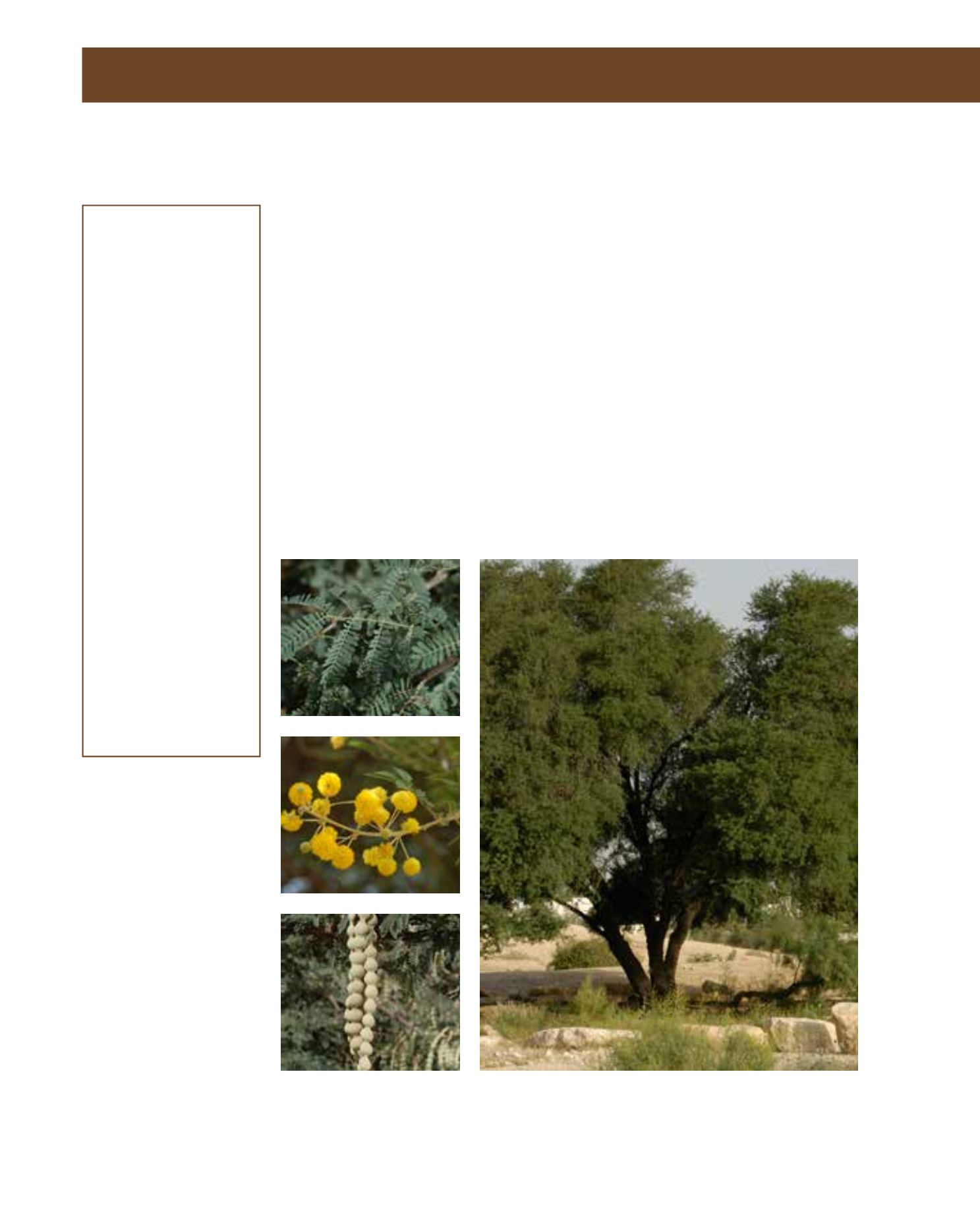

GENERAL
Origin
:
Mediterranean,
sub-tropical,
tropical
Vigour
:
normal growth
rate
Humidity
:
extremely arid,
very arid
Propagation :
sowing and
pricking out
Maintenance :
low
CONDITIONS
Urban climate :
resistant
Dessication :
resistant
Stagnant water :
vulnerable
Irrigation
:
low, none
Salinity/ppm :
very high (8000
ppm)
Hardiness
:
0°C
SHAPE
Type
:
tree
Height
:
6 m-9 m
Spread
:
7 m-9 m
Foliage
:
evergreen
FLOWER
Colour
:
yellow
Size
:
1 cm - 2 cm
Period
:
January - March
Smell
:
scented, flower
FRUIT
Type of fruit :
pod
Fruit size
:
8 cm
Usually referred to by its synonym, Acacia arabica or sant al arabi, owing to its occurence on
the Arabian Peninsula. A. nilotica var. tomentosa occurs in Saudi Arabia in wadi habitats and
rowdahs on sandy and alluvial soils. Single-stemmed, this medium-sized tree with its flattened
or rounded crown is easily identified by the long, flat, straight, velvety-grey fruits with up to 12
constricted round seeds, which hang like peas in a pod. Young branchlets are densely white-
tomentose. The tree typically has a black bark with cracks exposing a red inner layer, which
exudes a sticky, reddish resin, well known as gum arabic. The long spines in pairs are sharp, while
the leaves are only quite small: fragrant, fluffy yellow flowers appear during winter until spring.
Very drought- and salt-tolerant, A. nilotica is unfortunately susceptible to freezing temperatures.
All parts of the tree have medicinal properties; its twigs are valued as chewsticks. Tender pods
and shoots are used as forage for camels, sheep and goats. Propagated by seed, which may require
scarification, direct seeding is common practice in afforestation schemes. It grows rapidly in
full sun, in dry, well-drained sandy or silty soils. After establishment, irrigation can be reduced,
whereby occasional deep watering will stimulate growth and deep roots. Planted as a specimen
tree or in groups in a desert or extensive landscape situation, the tree, with sufficient space, makes
a beautiful silhouette. Unless frequently pruned to preserve its shape, the tree becomes leggy.
29
Acacia nilotica,
Mimosaceae
Arabian Acacia,
Babul, Gum Arabic Tree, garad, sant al arabi
















